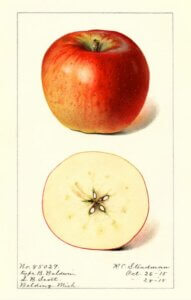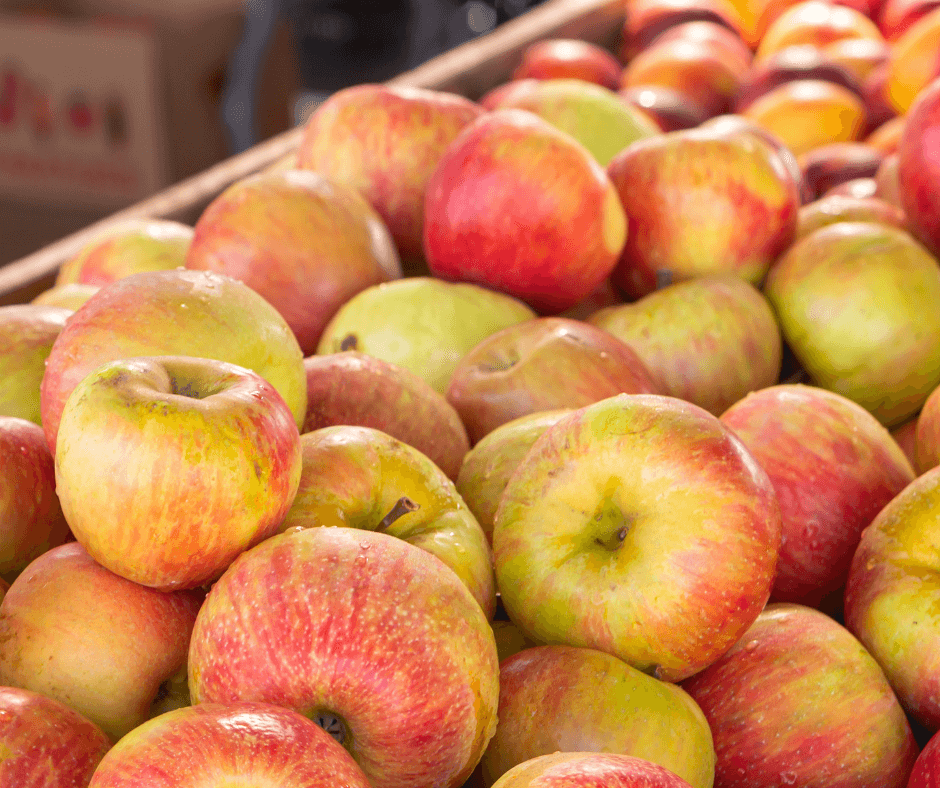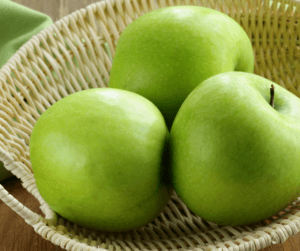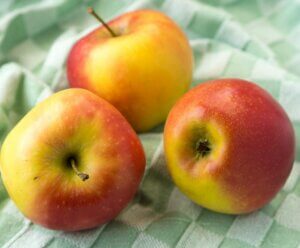
Some apple varieties are just made for baking into pies. All good pie apples share several characteristics. Perhaps most crucial is a crisp firm texture that holds up well in the oven rather than melting into mush. A good baking apple also needs robust flavor that can compete with the spices and lemon zest and other flavorings that make for classic apple pie. Finally, first-rate baking apples are good “keepers”, maintaining their flavor and texture after they come home from the market.
Some apple fanciers grow their own rather than buying them at the market. Dwarf (8- to 12-feet tall) or semi-dwarf (12 to 16 feet) apple trees make the best fit for backyard orchards, as opposed to 20-foot-plus full-sizers. Apple trees of whatever variety or size thrive in full sun and deep, well-drained, humus-rich soil (apply a half-inch mulch of Fafard Organic Compost in spring to make your trees extra-happy). Most varieties also need well over 500 hours of sub-45-degree temperatures per year to produce a good crop. Some varieties bear well each year; others in alternate years.
Store apples in a cool, airy place after harvesting or purchasing.
Baldwin Apple
One of the most popular apples in American for some 150 years after its introduction in the late eighteenth century, Baldwin is still unsurpassed as a pie apple. Its firm yellowish flesh carries a full spicy sweet-tart flavor that excels in ciders and preserves as well. Baldwin also makes a good eating apple, and a large one at that. Saplings of this heirloom variety are still widely available. An alternate-year-bearer, it grows vigorously to 30-feet or more unless grafted on dwarfing rootstock.

Evercrisp and Honeycrisp Apples

These two apple varieties exhibit many similarities – which is not surprising, given that Evercrisp is a hybrid of Honeycrisp. Both produce large, sweet, juicy, densely fleshed apples, with a bit of tartness thrown in. Best known as eating apples, they hold their own quite nicely in pies and other baked goods. They also hold well in storage, for 3 months or more. Honeycrisp is a popular backyard tree, available in all sizes, dwarf to full-size. It typically bears in alternate years. Cultivation of Evercrisp is limited to members of the Midwest Apple Improvement Association, which introduced it.
Ginger Gold Apple
For an early-season pie, few apples can match Ginger Gold. A chance seedling of Golden Delicious, it ripens its greenish-yellow, white-fleshed, salmon-tinged fruits in August, weeks before most other varieties. It departs from most other early apples by storing well. Medium-sized, crisp, and spicy-sweet, it’s yummy eaten out of hand, sliced into salads, or cooked in any number of ways. Ginger Gold is excellent for home orchards, not least because it produces annual crops at an early age – typically within 3 years of planting.
Golden Delicious Apple

This nineteenth-century heirloom variety still warrants growing (and eating and baking). The medium to large fruits ripen late in the apple season, their yellow flesh turning crisp and sweetly pear-flavored as they skins turns from green to pink-flushed gold. They keep their flavor for many weeks thereafter. Golden Delicious trees are easy if somewhat disease-susceptible growers, with substantial harvests beginning within a few years of planting. Crops are heavier in alternate years.
Granny Smith Apple
An ideal backyard tree for warmer climates, Granny Smith needs only about 500 chilling hours and thrives in long hot summers. This is not surprising, given its Australian origins (circa 1868). Where happy, this heirloom variety yields medium-sized apples with green-yellow, pink-tinged, chewy skin and firm, white, tart flesh. They keep forever and are good fresh or cooked. Small in stature and reliably annual-bearing, Granny Smith trees are a good fit for home orchards, especially in the Southeast and Pacific Coast regions.

Kanzi Apple
This recent introduction from Europe has all the qualities of a classic pie and dessert apple. The fruits are tartly sweet, crunchy, juicy, and long-keeping. Their attractive orange-red and yellow-green skin yields easily when eaten out of hand. Unfortunately, this trademarked variety is not available for backyard growing.

Mutsu (Crispin) Apple

A larger-, spicier-, juicier-fruited offspring of Golden Delicious, this all-purpose apple originated in Japan nearly 100 years ago. Among its other virtues are a long shelf life and a low 500 chilling-hours requirement to bear fruit. At their largest, the pink-blushed, yellow-skinned, creamy-fleshed fruits are a meal in themselves. Mutsu trees produce annual crops at an early age and are of vigorous growth.
Northern Spy Apple

Some apple aficionados consider this big bodacious heirloom to be unsurpassed as an eating, baking, and cider apple, more than 200 years after it originated in a Connecticut orchard. Underneath the pale-red skin is a crunchy, juicy, yellowish interior with an intense sweet flavor balanced by tart acidic undertones. The apples maintain their taste and texture for several months after picking. Northern Spy trees may take 10 years or more to produce a good crop – and then only biennially – which limits their suitability for commercial growing. Consider yourself blessed if you can find them – or better yet grow them yourself.
Rhode Island Greening Apple

Long before there was a Granny Smith, there was the Rhode Island Greening, a supreme apple for cooking, baking, and drying. Ironically, this green-skinned apple entered horticulture thanks to one Mr. Green, a seventeenth-century innkeeper in Green’s End, Rhode Island. Firm and fine-grained, the greenish-white flesh of this medium to large apple is refreshingly tart. It ripens very late in the season, sweetening as temperatures turn chillier in October. Rhode Island Greening trees tend to be biennially bearing and long-lived. They’re also typically large and wide-spreading, necessitating the use of dwarf or semi-dwarf specimens where space is limited.

